# SPIN Selling
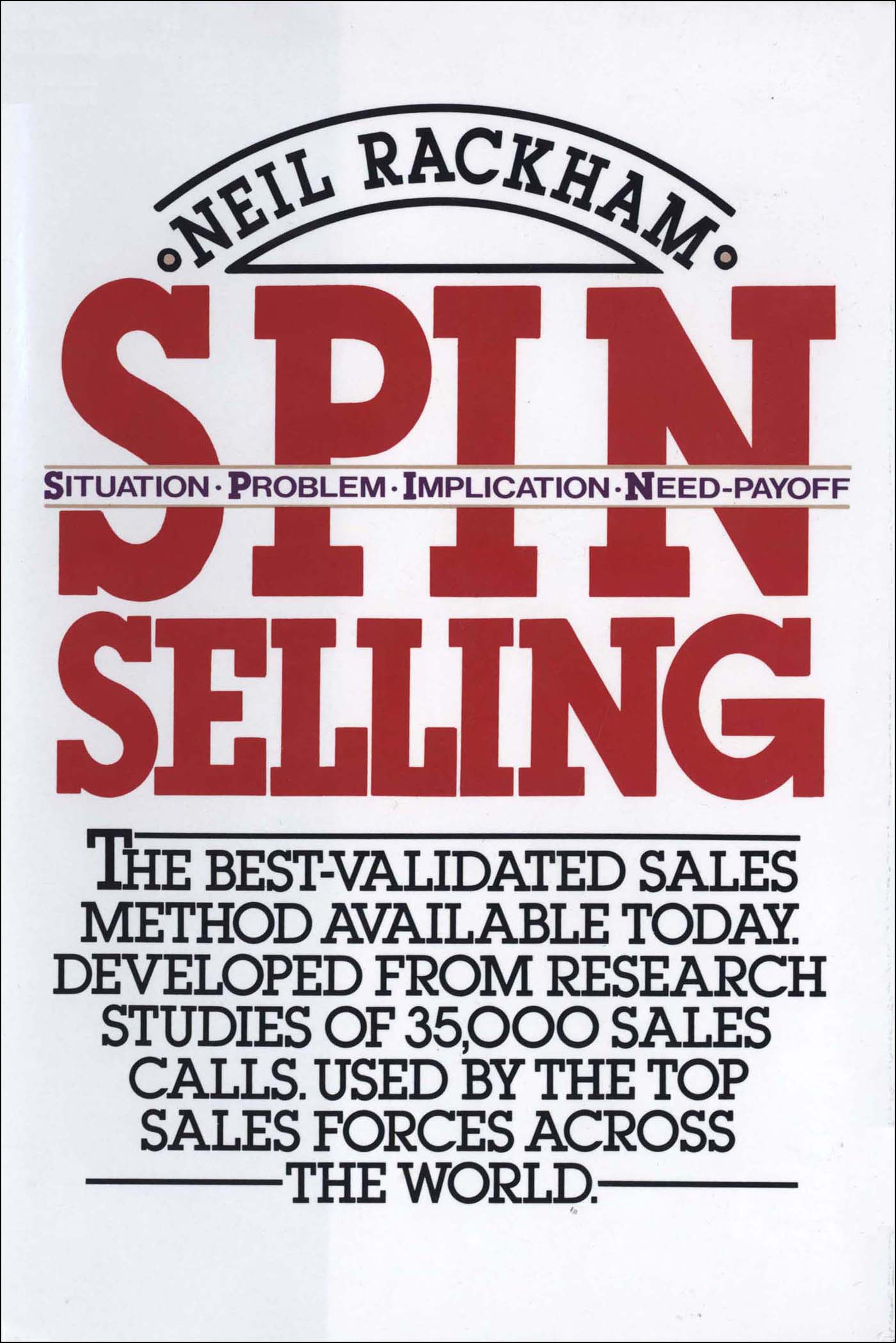
## Metadata
- Author: [[Neil Rackham]]
- Full Title: SPIN Selling
- Category: #books #selling #skills #gründen101
- Summary: "SPIN Selling" by Neil Rackham is based on extensive research from analyzing over 35,000 sales calls. The book emphasizes the importance of effective questioning and understanding customer needs, especially in larger sales. Success in selling is determined more by specific behaviors and details rather than general traits or strategies.
# TL;DR - Quick SPIN Selling Reference
# Quick SPIN Selling Reference
**SPIN = Situation, Problem, Implication, Need-Payoff**
1. **Situation**
- **Purpose**: Gather basic facts.
- **Example**: “How long have you used your current system?”
- **Tip**: Don’t overdo it; too many can frustrate the buyer.
2. **Problem**
- **Purpose**: Uncover challenges or dissatisfactions.
- **Example**: “What’s the biggest issue you run into with your current setup?”
- **Tip**: Surfaces *Implied Needs*—the buyer’s pain points.
3. **Implication**
- **Purpose**: Highlight the *consequences* of the problem.
- **Example**: “How does this bottleneck affect your team’s performance?”
- **Tip**: Creates *urgency* by showing the real impact.
4. **Need-Payoff**
- **Purpose**: Have the buyer articulate the *value* of fixing the problem.
- **Example**: “If we resolved that bottleneck, how would it help your bottom line?”
- **Tip**: Lets the buyer “sell themselves” on the solution.
---
## Advantages vs. Benefits
- **Feature**: A fact or characteristic of your product.
- Example: “It has 512K buffer storage.”
- **Advantage (Type A Benefit)**: Shows *how* that feature *could* help (general).
- Example: “The extra buffer lets you handle more tasks at once.”
- **Benefit (Type B Benefit)**: Directly addresses an *Explicit Need* the buyer expressed.
- Example: “Because you need faster processing, our extra buffer reduces wait times by 30%, helping you meet daily quotas.”
---
## Why SPIN Works
- **Bigger Deals**: Require deeper insight into the buyer’s priorities and the ripple effects of their challenges.
- **Objections** drop when the buyer fully grasps *value* before you pitch.
- **Closing** is often a *next step*, like a trial or deeper stakeholder meeting, rather than a one-call deal.
Use this as a **mental checklist** whenever you’re in a discovery or sales conversation:
1. **Situation** → 2. **Problem** → 3. **Implication** → 4. **Need-Payoff**.
Finish by connecting a **Benefit** to the buyer’s explicit needs, and you’ll help them see the genuine impact of your solution.
## 2. The SPIN Questions
Rackham’s **SPIN** framework stands for **Situation, Problem, Implication, Need-Payoff**. These four question types follow a logical flow, helping the buyer become aware of a problem’s gravity, then leading them to see the solution’s full value.
1. **Situation Questions**
- **Gather facts** and background.
- Use sparingly (buyers can get bored or annoyed if you overdo it).
- Example:
> “How long have you been using your current software platform?”
2. **Problem Questions**
- **Identify pain points** or issues the buyer faces.
- These reveal potential areas your solution can address.
- Example:
> “What kind of challenges have you experienced with the platform’s reliability?”
3. **Implication Questions**
- Highlight the **consequences** or ripple effects of the buyer’s problems, especially for **decision-makers**.
- They intensify the sense of urgency.
- Example:
> “How does the system downtime affect your bottom line or your team’s morale?”
4. **Need-Payoff Questions**
- Get the buyer to **describe the benefits** of addressing the problem.
- By articulating how they’d benefit, the buyer convinces themselves of the solution’s value.
- Example:
> “If we could improve uptime by 20%, how would that impact your team’s productivity or your costs?”
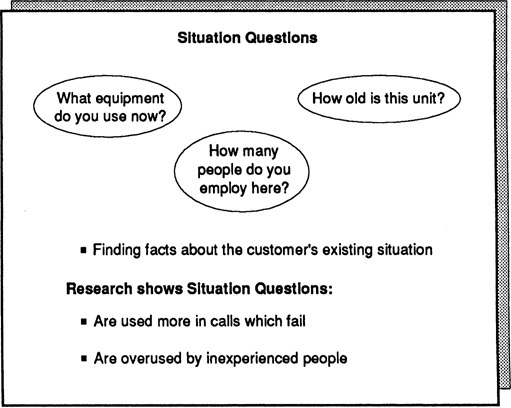
**Figure 4.1.** Visual representation of how SPIN questions build on each other.
---
## 3. Key Insights & Highlights
### 3.1 Asking the Right Questions
- **Situation & Problem Questions** are essential but **not** strongly predictive of success on their own in **large deals**.
- **Implication Questions** transform a mild issue into a **pressing** one. They’re especially potent with senior stakeholders.
- **Need-Payoff Questions** let the buyer sell themselves on the **value** of your solution.
> “How will this problem affect your future profitability?” (Implication)
> “Would it be useful to speed this operation by 10%?” (Need-Payoff)
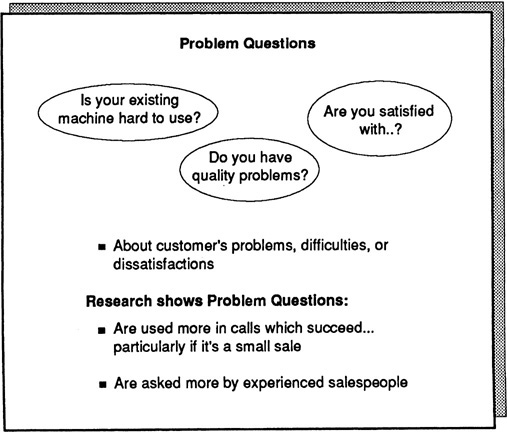
**Implication Question**: Problem-centered, highlights impact.
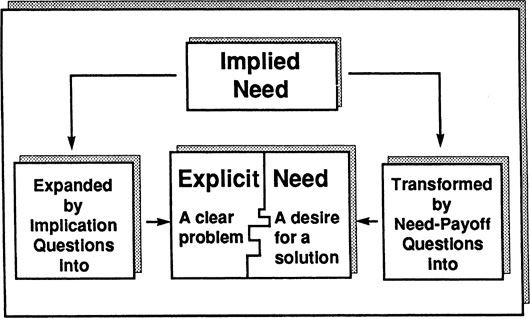
**Need-Payoff Question**: Solution-centered, focuses on benefits.
---
### 3.2 Building Value vs. Listing Features
- **Features** (technical specs, data points) are not as persuasive in **larger** sales; they can raise price concerns if used too early.
- **Advantages (Type A Benefits)**: Show general ways the product _could_ help. Useful in smaller sales but less so in complex ones.
- **Benefits (Type B Benefits)**: Directly address the **Explicit Need** the buyer has stated. These are the “ah-ha!” moments that drive serious interest.
> “Our platform’s advanced analytics reduce the time your analysts spend on manual work by at least 30%. **How would that impact your capacity for new initiatives?**”
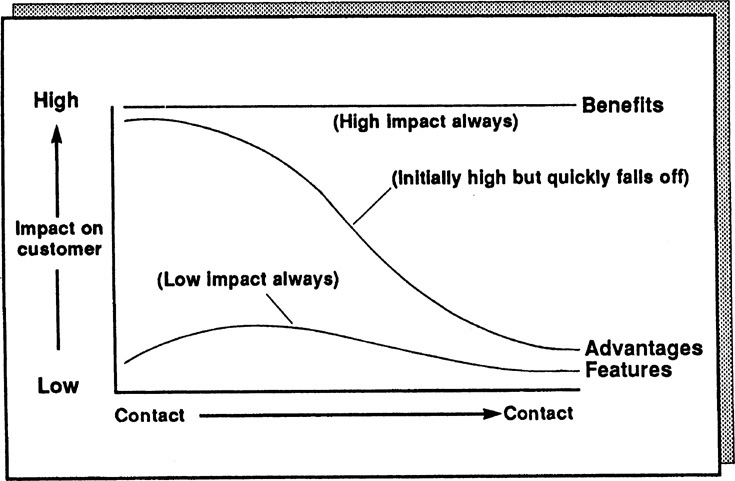
**Figure 5.8.** Contrasts the effectiveness of features vs. relevant benefits during a sales conversation.
---
### 3.3 Objection Handling & Timing
- In **major sales**, objections often arise when the seller **rushes** to propose solutions before the buyer sees enough **value**.
- Strong Implication and Need-Payoff questions can **minimize objections**, as they help buyers understand the gravity of their issues and the payoff of solving them.
> Objections aren’t a sign of “interest” but often a sign the buyer **doesn’t see enough value** yet.
> “The customer’s price concern was just a symptom. The cause was giving too many Features.”
---
### 3.4 Effective Closing in Big-Ticket Sales
- **Don’t** push for the final order prematurely. In large deals, each meeting usually aims for **progress**: a pilot, a deeper demo, a stakeholder meeting.
- “Closing” is less about a clever phrase and more about ensuring you’ve built up a **compelling case** for action.
> _“Would you be interested in reviewing a quick ROI analysis with your finance team?”_
---
## 4. Detailed Table: Question Types
|**Question Type**|**Purpose**|**Example**|
|---|---|---|
|**Situation**|Gather basic background or facts|“How long have you used the current system?”|
|**Problem**|Identify and explore specific issues|“What issues are you running into with your workflow?”|
|**Implication**|Emphasize consequences, create urgency|“How does downtime affect team morale and overall costs?”|
|**Need-Payoff**|Highlight value of solving the problem, customer articulates ROI|“What improvements do you see if we reduce errors by 30%?”|
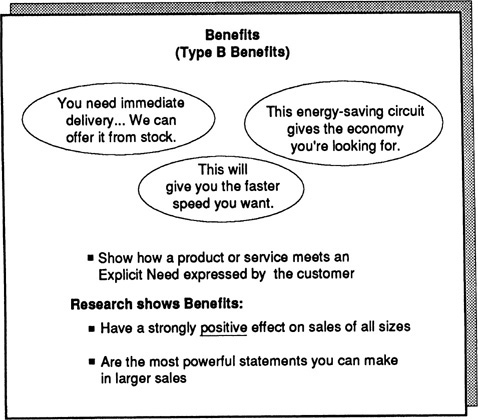
**Figure 4.9.** Implication = problem-centered, Need-Payoff = solution-centered.
---
## 5. Practical Application
1. **Preparation**
- Pre-research typical challenges your prospect’s industry faces (fewer **Situation Questions** needed during the call).
2. **Early in the Call**
- Ask carefully chosen **Situation & Problem Questions**—enough to understand the context without annoying the buyer.
3. **Mid-Call**
- Use **Implication Questions** to expand the buyer’s view of the problem’s severity and consequences.
- Transition to **Need-Payoff Questions** once they’ve acknowledged the problem is worth solving.
4. **Demonstrate Capability**
- Only after you’ve established a clear, **Explicit Need** in the buyer’s mind.
- Focus on **benefits** that address exactly what the buyer highlighted.
5. **Commitment Step**
- Propose a next step or solution that aligns perfectly with the **problems and needs** uncovered.
- If they still hesitate, revisit **Implication or Need-Payoff** to bolster the value.
---
## 6. Additional Highlights & Quotes
- **“Customers become more cautious as the decision size increases. Purchase price is one factor that increases.”**
- **“Implication Questions are especially powerful when selling to decision makers.”**
- **“We’re offering solutions too soon, before building up the problem’s real cost.”**
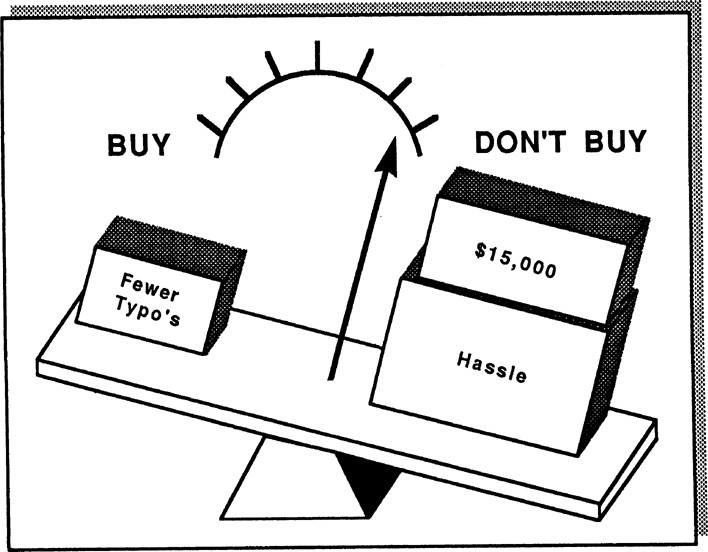
**Figure 6.6.** How a customer perceives an overly-early pitch: high cost, unclear value.
---
## 7. Closing Thoughts
- **SPIN Selling** redefines traditional sales by showing that **asking, not telling**, is the key to large-scale success.
- High-level buyers don’t want small talk or feature-dumps; they want to explore **real business issues** and see **tangible value**.
- By carefully sequencing **Situation → Problem → Implication → Need-Payoff**, you let the buyer discover the importance of addressing their problem—and the **ROI** of your solution.
> _“In summary, successful sales in large accounts hinge on uncovering explicit needs before offering solutions, thus reducing objections and making ‘closing’ a natural next step.”_
---
**End of Notes**
# Readwise notes
## SPIN Selling: A Summary with Examples
The SPIN selling technique, as described in the provided source, is a method of questioning that aims to help salespeople **uncover customer needs and guide them toward a solution**. It is especially effective in **high-value sales** where decisions are more complex.
### Four Stages of a Sales Call
The SPIN technique operates within a broader framework of four stages that most sales calls go through:
1. **Opening:** This stage focuses on introductions and setting the tone for the conversation. It's crucial as customers form **key first impressions within the first two minutes**.
- Example: _“Hi [Customer Name], thanks for taking my call. I wanted to introduce myself and briefly explain how our company can potentially help your business…”_
2. **Investigating:** This stage involves asking questions to **uncover customer needs and pain points**.
- This is where the SPIN technique comes in.
3. **Demonstrating Capability:** In this stage, the salesperson shows how their product or service can **address the customer's needs and provide solutions**.
- Example: _“Based on what you’ve told me about your challenges with [problem area], I believe our [product/service] can help by [explaining specific benefits and how it addresses their needs].”_
4. **Obtaining Commitment:** This final stage focuses on getting the customer to **commit to the next step**, whether it's a purchase, a follow-up meeting, or another action.
- Example: _“Given what we’ve discussed, would you be interested in a trial run of our product to see how it performs in your environment?”_
### The SPIN Questions
SPIN questions are designed to be asked in a specific sequence to **gradually guide the customer toward recognizing their need and the value of your solution**.
1. **Situation Questions:** These questions gather **basic facts and background information** about the customer's situation. They are important for establishing context but should be used sparingly as too many can bore the customer.
- Example: _“How long has your company been using its current [system/process]?”_
2. **Problem Questions:** These questions probe for **problems, difficulties, or areas of dissatisfaction** that the customer is experiencing. They help to uncover needs and pain points that your solution can address.
- Example: _“What are some of the challenges you’ve faced with your current [system/process]?”_
3. **Implication Questions:** These questions explore the **consequences or implications of the customer's problems**. They help the customer to understand the potential impact of their problems and the urgency of addressing them.
- Example: _“How does the slow speed of your current system affect your team's productivity and your overall bottom line?”_
4. **Need-Payoff Questions:** These questions focus on the **value or benefits of solving the problem**. They get the customer to articulate the positive outcomes of using your solution and build desire for it.
- Example: _“If we could help you speed up your process by 20%, how would that impact your team’s efficiency and your company's profitability?”_
### Key Points to Remember
- **Focus on the customer:** The SPIN technique is about understanding and addressing customer needs, not just pushing your product.
- **Ask open-ended questions:** Encourage the customer to talk and reveal information.
- **Listen actively:** Pay close attention to what the customer is saying to identify their true needs.
- **Tailor your questions:** The specific questions you ask will vary depending on the customer and their situation.
- **Guide the conversation:** Use the SPIN questions strategically to move the conversation toward a solution.
By mastering the SPIN selling technique and incorporating it into the four stages of a sales call, salespeople can increase their effectiveness in high-value sales and build stronger customer relationships.
## Highlights
- three most important areas of selling—closing, objection handling, and probing ([View Highlight](https://read.readwise.io/read/01j9s2yg6h6m47tnzm01b42sk5))
- Customers become more cautious as the decision size increases. Purchase price is one factor that increases ([View Highlight](https://read.readwise.io/read/01j9vnwvm6dw5jh86n7wpt76q9))
- The Four Stages of a Sales Call ([View Highlight](https://read.readwise.io/read/01j9vnz41zgk5ceezrr0m4y501))
- almost every sales call you can think of, from the simplest to the most sophisticated, goes through four distinct stages ([Figure 1.1](private://read/01j9s27jq26w55st9j4k85sht2/#fig1.1)):
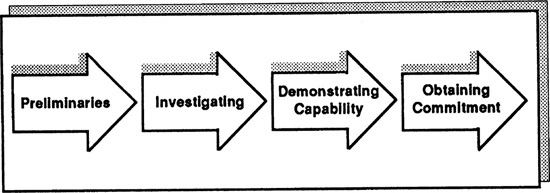 ([View Highlight](https://read.readwise.io/read/01j9vnzzkxa4pwq324ysyseh1m))
- introduce yourself and how you begin the conversation. ([View Highlight](https://read.readwise.io/read/01j9vp0qyst5kk95b7k0m1b7ny))
- 2 minutes of a call that the customer forms crucial initial impressions that will influence the rest of the sale. ([View Highlight](https://read.readwise.io/read/01j9vp17m6cgdx38p1j2d8mswk))
- 2. *Investigating*. Almost every sale involves finding something out by asking questions. ([View Highlight](https://read.readwise.io/read/01j9vp3ws1xarnab2p5j413gs7))
- *Demonstrating Capability*. In most calls you will need to demonstrate to customers that you’ve something worthwhile to offer. ([View Highlight](https://read.readwise.io/read/01j9vp4d6dmpfzcsy739yqvrpw))
- solutions to customer problems. ([View Highlight](https://read.readwise.io/read/01j9vp4nrv2wvyc8ws0k4jrxp0))
- Finally, a successful sales call will end with some sort of commitment from the customer. ([View Highlight](https://read.readwise.io/read/01j9vp6fcwp2d6gvpc072evt5r))
- I’m convinced that most salespeople suffer from being weak closers. ([View Highlight](https://read.readwise.io/read/01j9w0xazfw0d3qfp4n05see5b))
- Open questions are more powerful than closed questions because they get the customer talking and often reveal unexpected information. ([View Highlight](https://read.readwise.io/read/01j9w162an5pb3dpn7db1ct5wy))
- A general goal of sales training should be to help people ask more open questions. ([View Highlight](https://read.readwise.io/read/01j9w16rwfze0hxh9cajnz8962))
- In other words, none of our studies showed that the classic distinction between open and closed questions has any meaning in high-value sales calls. ([View Highlight](https://read.readwise.io/read/01j9w18ey9q2rz1n86satp8gkz))
- From watching sales calls, it was clear that successful people didn’t just ask random questions. ([View Highlight](https://read.readwise.io/read/01j9w19dn4txrh99kap15de1pv))
- In summary, the SPIN ([View Highlight](https://read.readwise.io/read/01j9w1a0d4h0a463kqe6r74bbd))
- sequence of questions is ([View Highlight](https://read.readwise.io/read/01j9w1a4hyynwm0r1ajbk6ge2f))
- ask data-gathering questions about facts and background. ([View Highlight](https://read.readwise.io/read/01j9w1ahnxgyfypx3cbf223drz))
- “How long have you had your present equipment?” ([View Highlight](https://read.readwise.io/read/01j9w1apn51zxp7ze1mmheg7y4))
- Questions have an important fact-finding role, successful people don’t overuse them because too many can bore or irritate the buyer. ([View Highlight](https://read.readwise.io/read/01j9w1befh0j5r33vjdfx9a6e6))
- Once sufficient information has been established about the buyer’s situation, successful people tend to move to a second type of question. ([View Highlight](https://read.readwise.io/read/01j9w1bq35dr64yk9kybe6vx4p))
- “Is this operation difficult to perform?” ([View Highlight](https://read.readwise.io/read/01j9w1bvd01rcjjxgvdjwfzpnq))
- Implication Questions ([View Highlight](https://read.readwise.io/read/01j9w1ff48e2e8c4fvr5vzx8ap))
- “How will this problem affect your future profitability?” ([View Highlight](https://read.readwise.io/read/01j9w1fyes5exrt4603y9b7exk))
- Need-payoff Questions ([View Highlight](https://read.readwise.io/read/01j9w1h392msbdpf33tqghfng4))
- “Would it be useful to speed this operation by 10 percent?” or “If we could improve the quality of this operation, how would that help you?” ([View Highlight](https://read.readwise.io/read/01j9w1hg7bhzv7ykbshrghtx09))
- For now, perhaps the most important one is that they get the customer to tell *you* the benefits that your solution could offer. ([View Highlight](https://read.readwise.io/read/01j9w1jc22nerpft61hwdd1zxt))
- conclusion. For many writers, Obtaining Commitment is the most important step of a successful sale. ([View Highlight](https://read.readwise.io/read/01j9w1mh58dd1pjw7vm5pj8d4h))
## New highlights added October 12, 2024 at 1:44 PM
- Obtaining the *Right* Commitment ([View Highlight](https://read.readwise.io/read/01j9xprjst06r16n03hq8n7nzg))
- The first step in successful closing is to set the right objectives. The starting point for obtaining a commitment is to know what level of commitment from the customer will be needed to make the call a success. If this book was about simpler sales, then there wouldn’t be much need to explain what *success* means or to worry about its detailed definition. In a simple sale, a successful commitment is an order—and if you don’t take an order, you’ve failed. ([View Highlight](https://read.readwise.io/read/01j9xpsk26j6yq155dhqhbrfj0))
## New highlights added October 12, 2024 at 4:18 PM
- ([Figure 4.1](#fig4.1)).
 ([View Highlight](https://read.readwise.io/read/01ja0b94qv57e3pzdeefkr2v4z))
- Situation Questions are an essential part of questioning, but they must be used carefully. ([View Highlight](https://read.readwise.io/read/01ja0b9andatmwdyr6s791qzy5))
- Buyers quickly become bored or impatient if asked too many Situation Questions. ([View Highlight](https://read.readwise.io/read/01ja0b9cmya6fckn78zg53g46n))
- 
**Figure 4.2.** Problem Questions. ([View Highlight](https://read.readwise.io/read/01ja0b8sj9qy35xnhsktjkjsrj))
- Problem Questions predict success in simple sales. ([View Highlight](https://read.readwise.io/read/01ja0b8ewhxrd9m2r8c0v3ppjd))
- However, Problem Questions are much less strongly linked to success in larger sales ( ([View Highlight](https://read.readwise.io/read/01ja0b8cwsj3f39knkvqterkkn))
- ELLER: *(Implication Question)* You say they’re hard to use. What effect does this have on your output? ([View Highlight](https://read.readwise.io/read/01ja0be92840fhd2w05ncg3jc5))
Implication question are espeically powerful when selling to decision makers
![[Screenshot 2024-10-13 at 11.41.31.png]]
Need_payoff question:; vlaue or usefullness of solving a problem
![[Screenshot 2024-10-13 at 11.42.04.png]]
## New highlights added October 13, 2024 at 11:00 PM
- But our research also found that Implication Questions are especially powerful in selling to decision makers ([View Highlight](https://read.readwise.io/read/01ja2mapkkng23b89nep0tnn02))
- Basically, they ask about the value or usefulness of solving a problem. ([View Highlight](https://read.readwise.io/read/01ja2mea8043ks8zf8a00tx37n))
- 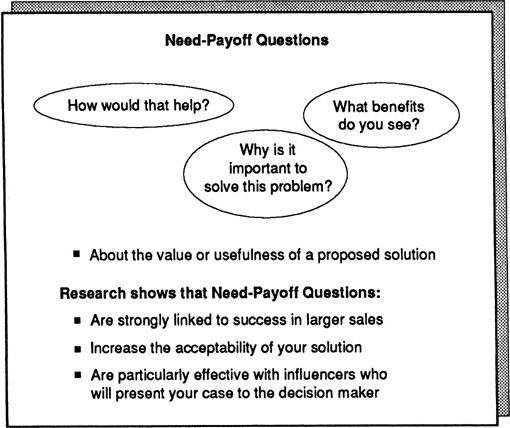
**Figure 4.8. Need-payoff Questions.** ([View Highlight](https://read.readwise.io/read/01ja2m3kjfyhdv3t7ja3bwvdqd))
- Is it important to you to solve this problem?
Why would you find this solution so useful?
Is there any other way this could help you? ([View Highlight](https://read.readwise.io/read/01ja2m3gkdcvnm3z496s1k8zah))
- Need-Payoff Questions Reduce Objections ([View Highlight](https://read.readwise.io/read/01ja2mjx4c9tq7excj2qyve2ms))
- SELLER: ...and another way the system will help you is in reduction of inventory levels.
BUYER: Good. That’s something we need to do. I’ll be talking to the V.P. of Finance tomorrow and I’ll mention this to him.
SELLER: *(Need-payoff Question)* You say it’s something you need to do. What benefits would you get from lower inventory levels? ([View Highlight](https://read.readwise.io/read/01ja2mp75v2f3wjkpbgeaphmbg))
- BUYER: Obviously the main one is cost.
SELLER: *(Need-payoff Question)* Would cost be the most important benefit for your Finance V.P.?
BUYER: Yes. Well...not necessarily. Now that I think about it, there could be another one that’s more urgent. At tomorrow’s meeting we’re reviewing our downtown warehousing. We’re using an expensive site, and our V.P. would like to close it and consolidate the inventory here. But we don’t have quite enough warehousing space at this location. If your system could reduce levels at this site by just 5 percent, then we could close the downtown building.
SELLER: *(Need-payoff Question)* And this would save you money?
BUYER: About $250,000 a year. If you’ve got a way to help us do this, I’ll try to get 15 minutes with our V.P. before the meeting. ([View Highlight](https://read.readwise.io/read/01ja2mpcmq5ryyb4gmdm920rzx))
-  The buyer is explaining the benefits to the seller, not vice versa. ([View Highlight](https://read.readwise.io/read/01ja2kxr90axvjgm59ffagv1vb))
- In summary, Need-payoff Questions are important because they focus attention on solutions, not problems. ([View Highlight](https://read.readwise.io/read/01ja2kxx2f327ea4gg331aa9cs))
- nd they make customers tell *you* the benefits. ([View Highlight](https://read.readwise.io/read/01ja2ky16erx79d62xrt5rm5ty))
- #### The Difference between Implication and Need-Payoff Questions ([View Highlight](https://read.readwise.io/read/01ja2mpjvcznbp5xp164qb931k))
| Question Type | Purpose | Example Question |
| -------------------------- | -------------------------------------------------------------------------------------------------------------- | ------------------------------------------------------------------------ |
| **Problem Question** | To identify and understand specific issues, difficulties, or dissatisfaction in the current situation. | "What challenges are you currently facing with your existing system?" |
| **Implicit Need Question** | To highlight underlying needs or issues, often creating awareness in the customer's mind about potential gaps. | "Are there areas where you feel the current solution could be improved?" |
| **Need-Payoff Question** | To help the customer envision the benefits of a solution and recognize the value of addressing the issues. | "How would it impact your business if you could resolve this issue?" |
- 
**Figure 4.9.** Implication Questions are problem-centered; Need-payoff Questions are solution-centered. ([View Highlight](https://read.readwise.io/read/01ja2mv7ykbehby8r428qm4e38))
## New highlights added October 27, 2024 at 12:10 PM
- member came into the office to collect his father ([View Highlight](https://read.readwise.io/read/01jb4sd3k1hyqkwsj03vg9tan5))
## New highlights added October 29, 2024 at 3:36 PM
- s we know, Situation Questions can become negatively related to success. The more you ask, the less likely it is that the call will succeed. ([View Highlight](https://read.readwise.io/read/01jbaf611t24yhpng9z69nrd6w))
- ed.
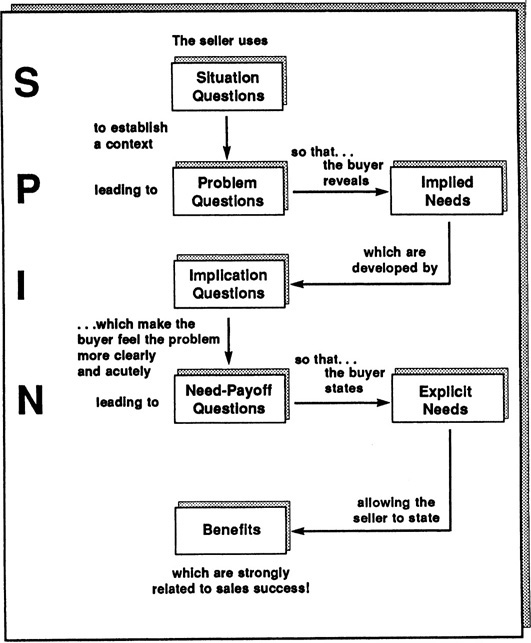
**Figure 4.10.** The SPIN Model. ([View Highlight](https://read.readwise.io/read/01jbaf8fvvqd8jjp0qe9j8yv5f))
- In summary, our research on questioning skills shows that successful salespeople use the following sequence:
1. Initially, they ask *Situation Questions* to establish background facts. But they don’t ask too many, because Situation Questions can bore or irritate the buyer.
2. Next, they quickly move to *Problem Questions* to explore problems, difficulties, and dissatisfactions. By asking Problem Questions, they uncover the customer’s Implied Needs.
3. In smaller sales it could be appropriate to offer solutions at this point, but in successful larger sales the seller holds back and asks *Implication Questions* to make the Implied Needs larger and more urgent.
4. Then, once the buyer agrees that the problem is serious enough to justify action, successful salespeople ask *Need-payoff Questions* to encourage the buyer to focus on solutions and to describe the benefits that the solution would bring. ([View Highlight](https://read.readwise.io/read/01jbaf96a2hcpxaq03trhq5vkk))
- **How to Use SPIN Questions**
To ask SPIN questions effectively, begin by recognizing that your role in a sales call is that of problem solver ([View Highlight](https://read.readwise.io/read/01jbafd0366dyrr2cdh5bd92bd))
## New highlights added November 4, 2024 at 5:00 PM
- There are many generic Need-payoff Questions, such as these:
 ==Why is that important?
 How would that help?
 Would it be useful if...?
 Is there any other way this could help you? ([View Highlight](https://read.readwise.io/read/01jbt7y17q42kje9qvh9a84822))==
- Everybody knows what ==Features are. They are facts, data, or information about your products or services.== ([View Highlight](https://read.readwise.io/read/01jbt81h9v7kymwstscmpk2h2h))
- This system has 512K buffer storage,” “There is a four-stage exposure control,” ([View Highlight](https://read.readwise.io/read/01jbt81k62dedmt60jyh8854qt))
- 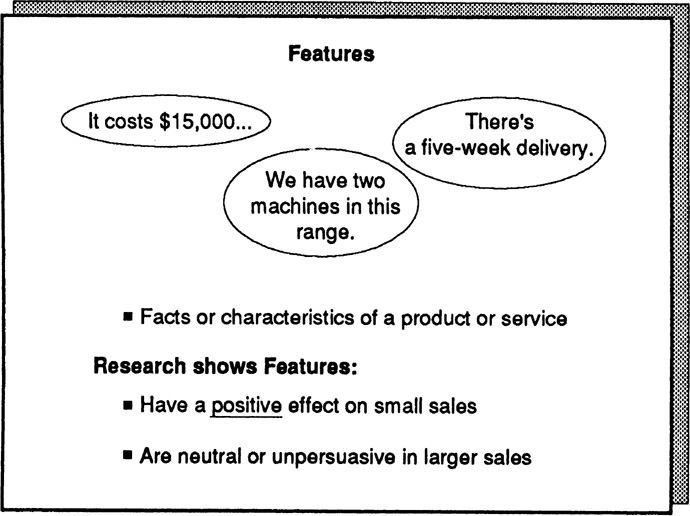 ([View Highlight](https://read.readwise.io/read/01jbt81vavc83ecdxf1p4ma5vn))
- Overall, the level of Features is slightly higher in unsuccessful calls ([View Highlight](https://read.readwise.io/read/01jbt81zgxz44tvp6pyyz5srfm))
- They don’t help the call, but they don’t harm it much either. ([View Highlight](https://read.readwise.io/read/01jbt820n4bkk1vj4xn860ha5q))
- Features are low-power statements that do little to help you sell. It’s better to use Benefits than Features ([View Highlight](https://read.readwise.io/read/01jbt8472h7jrpfqf1rht75f3v))
- A== Benefit is anything you say to a customer that’s smarter than a Feature ==([View Highlight](https://read.readwise.io/read/01jbt85nds66bq0dmsnk55m8cv))
- *Type A Benefit*. ==This type shows how a product or service can be used or can help the customer.==
 *Type B Benefit*. ==This type shows how a product or service meets an Explicit Need expressed by the customer.== ([View Highlight](https://read.readwise.io/read/01jbt86g39b53fkxfmr08ymgq9))
- **How Important Is the Difference?** In our research test we found that the Type A Benefit is quite strongly related to success in smaller sales but is only slightly related to success in larger sales. ([View Highlight](https://read.readwise.io/read/01jbt898490d16s0qkabzxj29y))
- And like so many other companies, we wonder why—despite our enthusiasm—we’re not making sales. We now understand that it’s precisely *because* of our enthusiasm that we have a problem. Our enthusiasm has led us to become product-centered and to give Features and Advantages. ([View Highlight](https://read.readwise.io/read/01jbt8svx3dhqk35b4x3c36wpr))
- **Demonstrating Capability Effectively** ([View Highlight](https://read.readwise.io/read/01jbt8zgs6dnmazzfrfke40609))
- on’t demonstrate capabilities too early in the call ([View Highlight](https://read.readwise.io/read/01jbt8zppfdtnm843yvge05vxc))
- It’s important in larger sales to develop ==Explicit Needs—by using Implication and Need-payoff Questions—before you offer solutions== ([View Highlight](https://read.readwise.io/read/01jbt8zynyc67vrv6x66gse3tk))
- “The professional salesperson,” the instructor began, *“welcomes* objections because they are a sign of customer interest. In fact, the more objections you get, the easier it will be for you to sell. ([View Highlight](https://read.readwise.io/read/01jbt97maz8823mxa1rn0c8fzj))
## New highlights added November 12, 2024 at 9:19 PM
- s that are the subject of this book.
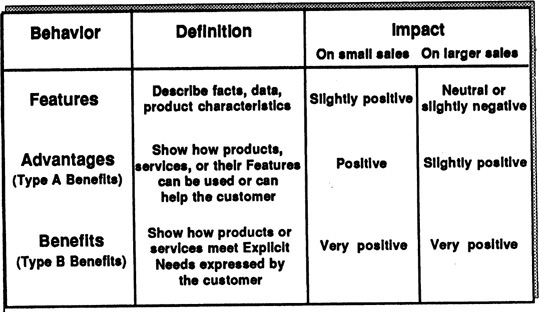 ([View Highlight](https://read.readwise.io/read/01jcgrv9h8jvad31j3757kr9qp))
- 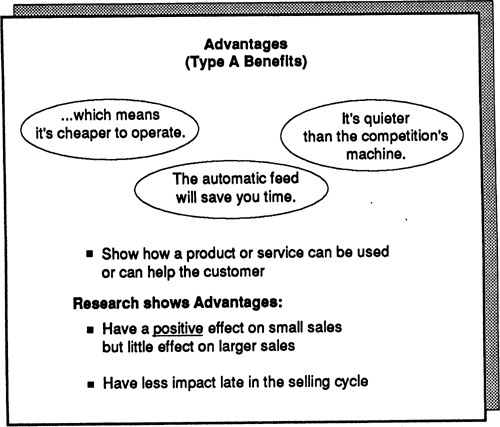
**Figure 5.4. Advantages (Type A Benefits).** ([View Highlight](https://read.readwise.io/read/01jcgrvgv2b5q6x97exkx2e4j9))
- We’ve seen that offering solutions to Implied Needs isn’t effective in larger sales. ([View Highlight](https://read.readwise.io/read/01jcgrx3v9br35pybmbayp49dm))
- o this use of Features and Advantages, which can work perfectly well in a small sale, is likely to be ineffective as the sale grows larger ([View Highlight](https://read.readwise.io/read/01jcgrxp2ctbxz23wg82ryqjfq))
- 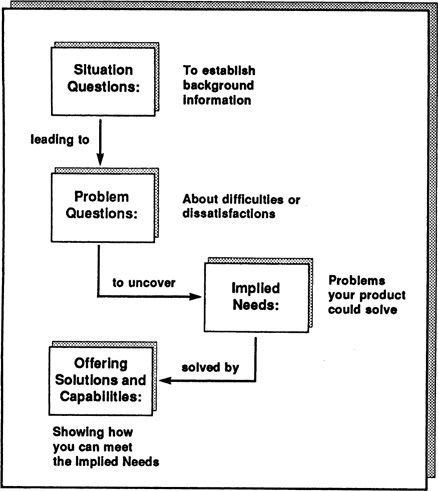
**Figure 5.5.** A recipe for success in the smaller sale, but for disaster in larger sales. ([View Highlight](https://read.readwise.io/read/01jcgrwswpsfqn9ea5xrx55h1z))
- 
**Figure 5.6.** Benefits (Type B Benefits). ([View Highlight](https://read.readwise.io/read/01jcgs3b73d8skkqg1bky5h3ek))
- 
**Figure 5.8.** Features, Advantages, and Benefits across the sell ([View Highlight](https://read.readwise.io/read/01jcgs02m3mtdq76nh5ndv3sf6))
## New highlights added November 17, 2024 at 1:23 AM
- nstead, the first thing to ask yourself about any new product is “What problems does it solve?” ([View Highlight](https://read.readwise.io/read/01jcvgpzscepa1rh1x7yckrd8e))
-  Objection handling is a much less important skill than most training makes it out to be. ([View Highlight](https://read.readwise.io/read/01jcvgwgaa0rh254ykxg0gk5sr))
-  ([View Highlight](https://read.readwise.io/read/01jcvgwj9k1c8y6hbtfsdb1snf))
- Now consider the advertisement shown in [Figure 6.4](#fig6.4). This watch is almost 100 times as expensive as the one in [Figure 6.3](#fig6.3). Do you think you’d be more likely to buy this expensive watch if there was a list of Features down the side of the advertisement to help persuade you? Not on your life! ([View Highlight](https://read.readwise.io/read/01jcvh1k5vhncsbz23g0d91vkh))
- ith top-of-the-market products, the price concern created by Features will make people *less* likely to buy. ([View Highlight](https://read.readwise.io/read/01jcvh1nshf8twc1mfgkjpkc2k))
- A list of Features would probably make you ask yourself questions about whether the expensive watch was worth it. ([View Highlight](https://read.readwise.io/read/01jcvh1wvrcggayjkhct37sf7r))
## New highlights added November 17, 2024 at 1:34 PM
- The customer’s price concern was just a symptom. The cause was giving too many Features. Teaching objection-handling skills would do no more to prevent price concerns than eating ice cream would prevent typhoid. ([View Highlight](https://read.readwise.io/read/01jcvhfcx9wck6kvtxqtzaesc8))
- 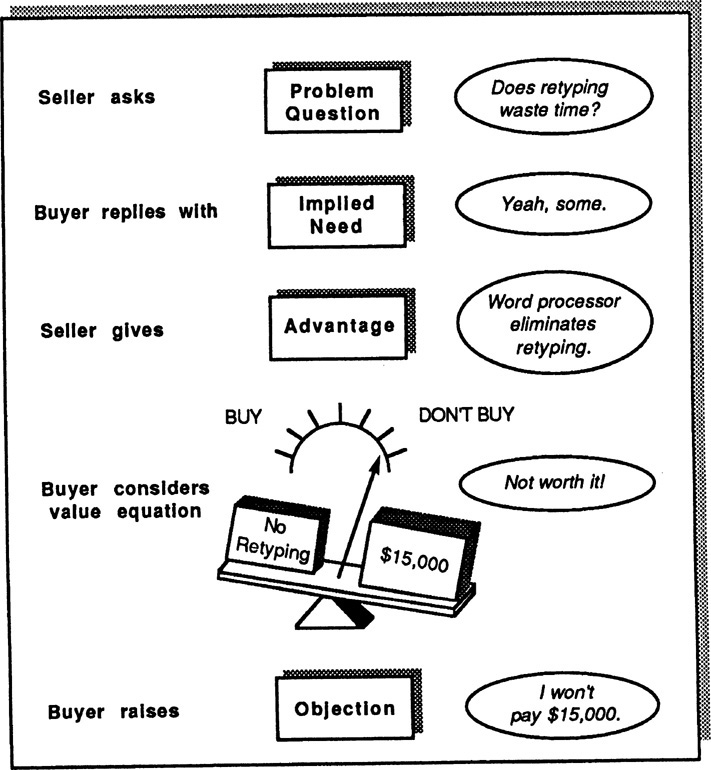 ([View Highlight](https://read.readwise.io/read/01jcvhfg0czz3wwf61kr8drrkr))
- The buyer doesn’t feel that the problem has enough *value* to merit such an expensive solution. ([View Highlight](https://read.readwise.io/read/01jcvhfre3748v79y518c7m8m8))
- Even the best objection-handling skills can’t alter the fact that the seller has offered a solution without first building value.

**Figure 6.6.** How the customer sees it.
Let’s look at how a more skilled person would handle the same situation: ([View Highlight](https://read.readwise.io/read/01jcvhn1zzy6kj0ykzxjmxet20))
- As we’ve seen, in small sales a high level of Advantages can be successful because there’s less need to build value before offering solutions ([View Highlight](https://read.readwise.io/read/01jcvje96vs1v3cwf20r5f78h0))
- But the reason I sell better now isn’t better objection-handling skills, it’s that I’m less likely to create unnecessary objections. ([View Highlight](https://read.readwise.io/read/01jcvjjskf7jv2prjdfah86bcd))
- One day, he told me, he insisted that they all wear their best clothes. Sales went up by 20 percent. But don’t expect a smart suit and a good opening sentence to add 20 percent to your sales volume if you’re in major-account selling. ([View Highlight](https://read.readwise.io/read/01jcvjsv578rbjmqv15sfgmhkk))
- **Conventional Openings**
Since the 1920s, salespeople have been taught that there are two successful ways to open a call: ([View Highlight](https://read.readwise.io/read/01jcvk13860b5tm67rvnwxtx8h))
- *Relate to the buyer’s personal interests*. ([View Highlight](https://read.readwise.io/read/01jcvjtat248n6r8wmsvt9be0q))
- or example, if your buyer has a photograph of children on the desk, discuss family interests; if there’s a golf trophy in the office, talk golf. ([View Highlight](https://read.readwise.io/read/01jcvjtkaykvj0bj65az69j6my))
- *Make an opening benefit statement*. ([View Highlight](https://read.readwise.io/read/01jcvjtwn1gnm2rqzc9bntehdm))
- Begin with some dramatic statement about the benefits your product can offer. For example, you might say, “Ms. Customer, in today’s marketplace productivity is the central concern of key executives like yourself—and our product will contribute to *your* productivity.” ([View Highlight](https://read.readwise.io/read/01jcvjvj9t5wm5e6w9y0f88rwn))
- Our evidence suggests that, while these two methods might be successful in smaller sales, there’s little to show that they help you when the sale is larger. Let’s review this evidence. ([View Highlight](https://read.readwise.io/read/01jcvk17rt6fxzv1sb49604g46))
- I get salespeople coming in here every day,” he said, “wasting my time by talking about a lot of nonbusiness issues. Obviously they’re fishing for some personal area that will catch my interest. But I’m a busy professional purchaser—and I couldn’t get through the day if I wasted time on conversation that isn’t directly business-related. So I use the picture to increase my productivity. When new sales reps visit me for the first time, they usually say, ‘What a beautiful picture. You must really enjoy sailing.’ I reply, ‘I *hate* sailing. That picture’s there to remind me how much time gets wasted out on the water. Now what did you want to see me about?’” ([View Highlight](https://read.readwise.io/read/01jcvk02zqzpfwtq5j2agjfk0p))
- The more senior the people you’re selling to, the more they feel their time is at a premium, and the more impatience you’re likely to generate if you dwell on nonbusiness areas. And there’s another reason. ([View Highlight](https://read.readwise.io/read/01jcvjzpxrg5zw9n9ew68e5ax3))
- I’m not saying that you should never begin a sales call by talking about a buyer’s personal interests. Sometimes, particularly if the buyer takes the lead in raising an area, it’s the right thing to do. ([View Highlight](https://read.readwise.io/read/01jcvk0qkz1qtwmcw8vms7a2d0))
- There’s another reason why the opening benefit statement may be ineffective. Successful salespeople talk about their products or services late in the sales call, but we’ve seen that less successful people begin talking products and solutions very much earlier in the call. ([View Highlight](https://read.readwise.io/read/01jcvk659ac16jf1zz2zqtv5bq))